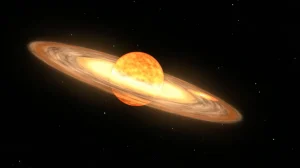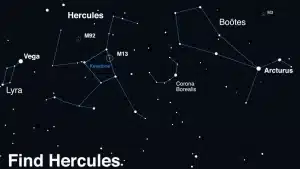NASA has announced a rare astronomical event that will happen this summer: a spectacular star explosion known as a nova, specifically T Coronae Borealis, or the “Blaze Star.”
Located roughly 3,000 light years away, the system consists of a white dwarf—an Earth-sized remnant of a dead star, comparable in mass to our Sun, and an ancient red giant that is gradually losing hydrogen due to the relentless gravitational pull of its neighboring white dwarf.
As hydrogen from the red giant accumulates on the surface of the white dwarf, it leads to a buildup of pressure and heat. Ultimately, this accumulation triggers a thermonuclear explosion of sufficient magnitude to eject the accreted material outward, according to NASA in a press release.
This explosion results in a sudden and intense burst of light that can be seen clearly from Earth, even without the use of telescopes.

Dr. Rebekah Hounsell, a nova specialist at NASA’s Goddard Space Flight Center, expressed her excitement for this “once-in-a-lifetime” event, stating, “It’s incredibly exciting to have this front-row seat.”
“There are a few recurrent novae with very short cycles, but typically, we don’t often see a repeated outburst in a human lifetime, and rarely one so relatively close to our own system,” Hounsell added.
The exact timing of this celestial phenomenon remains uncertain. However, NASA continues to monitor the star system closely, aiming to pinpoint the precise moment when the “Blaze Star” will grace the skies. Estimates suggest it will be visible to the naked eye for approximately a week.

To locate the nova when it happens, NASA suggests starting by finding the Northern Crown, a constellation shaped like a horseshoe west of Hercules, as per Fox News. From there, trace a line from the bright stars Arcturus and Vega towards Corona Borealis in Hercules where the “Blaze Star” will shine brightest. It will appear like a sudden new star has appeared in the night sky.
According to NASA the last time the “Blaze Star” nova was seen from Earth was in 1946.

